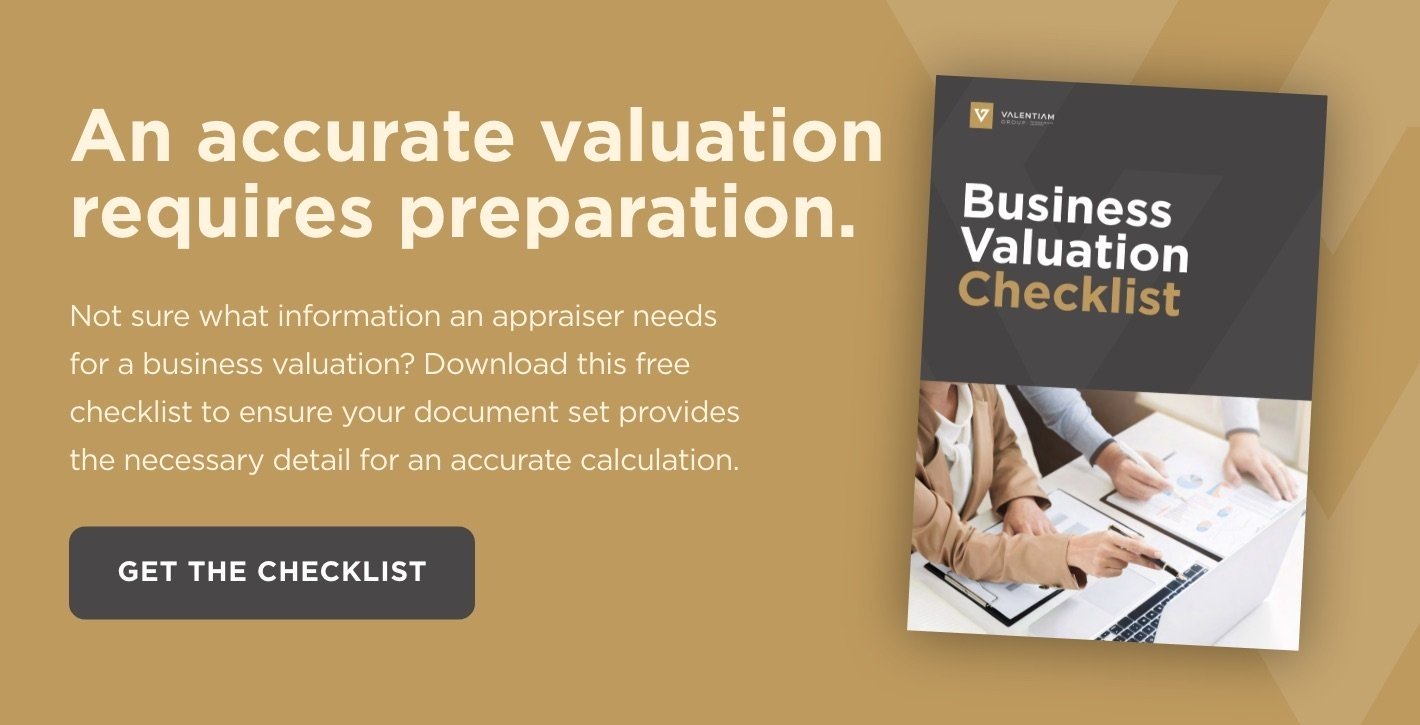Business Enterprise Value—What Is It?
Posted by Valentiam Group on April 14, 2021

Business enterprise value (BEV) is a term that is frequently used in discussions and reporting about mergers and acquisitions (M&A), but it has the same meaning outside of that context.
In this article, we’ll define business enterprise value, examine how it is established through a business enterprise value appraisal, and look at how to calculate a business enterprise valuation.
What is business enterprise value?
In short, business enterprise value represents the overall value of a going business concern in terms of what it would cost to acquire the business.
For a publicly traded company, this would be the cost if you could buy up 100% of the stock shares (essentially taking the company private), plus company debt, minus cash reserves. In the case of a private company, this would represent the sum of the market value of the owners’ equity, plus total debt, minus cash and cash equivalents. Enterprise value is an indication of the market value of a company, regardless of the capital structure utilized to finance its operations. Business valuation is a frequently used tool to determine BEV.
Download our free Business Valuation Checklist to learn about the information needed to calculate an accurate enterprise value for your business.
How does a business enterprise valuation establish value?
Because business enterprise valuation is concerned with finding the total going concern value of a company, it includes all of the tangible and intangible assets and the future value of growth opportunities. This includes certain intangible assets that are not typically not included in the balance sheet unless a company has been acquired. These intangibles include:
-
Intellectual property (IP) such as trademarks and patents,
-
Assembled workforce and skilled management,
-
Customer Relationships representing the existing customers and the value of having an existing customer over acquiring an new one,
-
Economic goodwill, not to be confused with accounting goodwill, including reputation, operating procedures and systems, legal agreements like operating and franchise agreements, leases, contracts, and working capital.
The BEV captures a more holistic picture of the entire company’s value as a going concern—unlike a market capitalization, which consists only of the number of shares outstanding multiplied by current share price. Enterprise value also includes preferred stock and debt, which each represents claims against the company, and it backs out cash reserves. As such, it represents the most complete representation of the company’s value, taking into account all assets and liabilities.
How To Calculate A Business Enterprise Value Appraisal
Enterprise value is calculated by adding market capitalization, preferred stock, and debt, then subtracting cash and cash equivalents from the balance sheet. It equates to the amount required to buy every share of stock—both common and preferred—and the outstanding debt. Cash is subtracted from this sum because once a purchaser has acquired complete ownership of the company, the cash becomes theirs.
The procedure for calculating a public company’s business enterprise value varies from the procedure for calculating the enterprise value for a private company, where there are no stock metrics for comparison and financials are not publicly disclosed. You can learn more about private company valuation here.
For the purposes of this article, we will concentrate on the stock and debt procedure used to calculate public company enterprise values:
-
Calculate the company’s market capitalization, by multiplying the number of shares of common stock by the current price per share.
-
Calculate the debt represented by preferred stock. Though preferred stock can differ in terms, in general, it represents future claims against the company.
-
Calculate all other debt. When acquiring a business, the buyer also acquires its debts.
-
Subtract cash and cash equivalents from the sum of 1, 2, and 3. If the business has cash, that cash is part of its enterprise value and transfers with the ownership of the company. Because the new owner can take that cash and pocket it, the cash essentially reduces the cost of purchasing the business. Therefore, it is subtracted when calculating enterprise value.
In M&A transactions where a public company is being purchased, the above metrics and calculations may be used to determine business enterprise value. However, valuation professionals will usually rely on a Discounted Cash Flow Model as the primary method to determine the business enterprise value. As noted, due to the paucity of available information regarding private companies, enterprise values for private businesses are determined using the three traditional valuation approaches—market, income, and cost.
Need help determining the enterprise value of your business?
Valentiam has helped companies in a variety of industries attain accurate enterprise and asset valuations. We have extensive experience in the application of all valuation methods for a broad range of businesses and situations. Our valuation and transfer pricing specialists have worked with some of the largest companies in the world.
Contact us to see how we can help your company with your valuation and transfer pricing needs.
Topics: Business valuation
Related Posts
EBITDA Multiples By Industry: An Analysis
EBITDA multiples by industry indicate growth, profitability, and stability of profits in various sectors—and are a quick and easy way to estimate value.
Valuation Methods: A Guide
Different types of business valuation methods are suited to specific needs. Here are the three primary types of valuation techniques and when they should be used.


